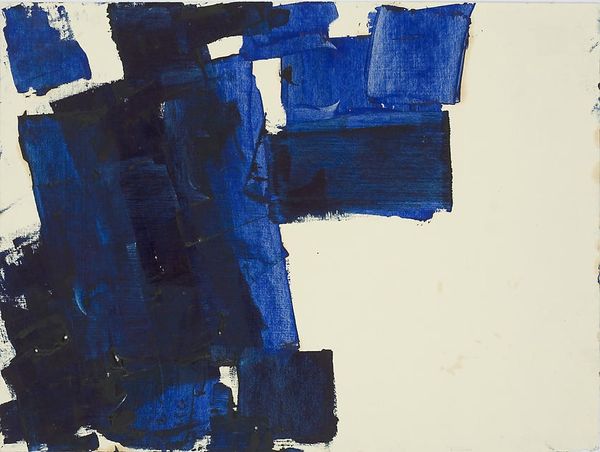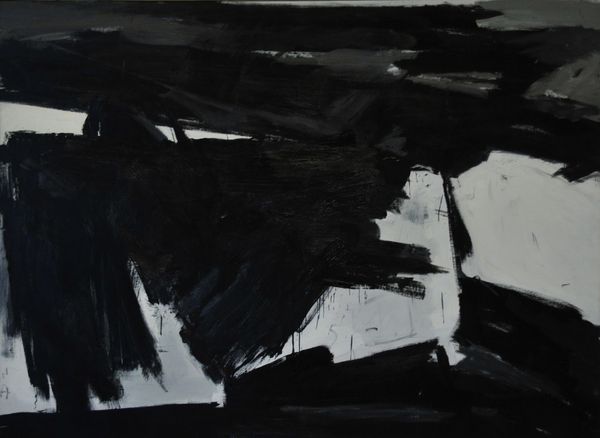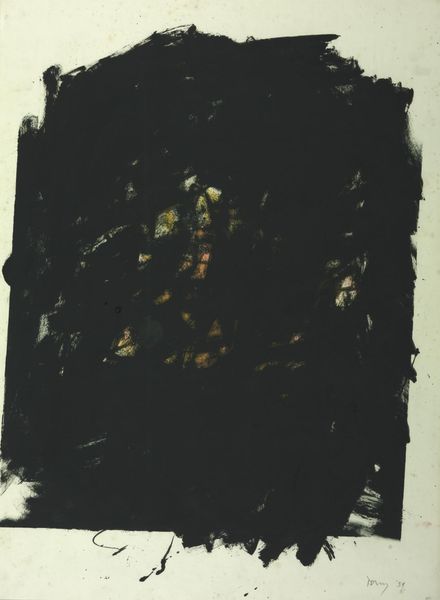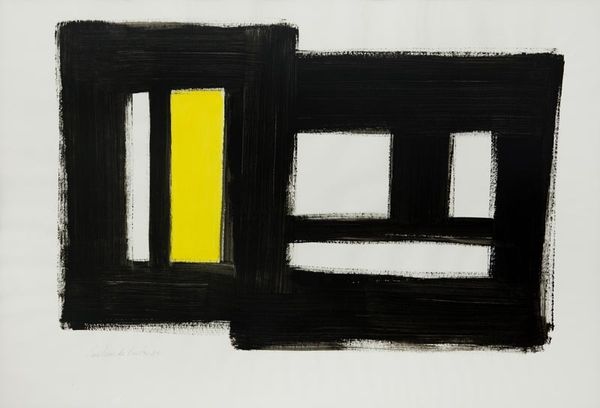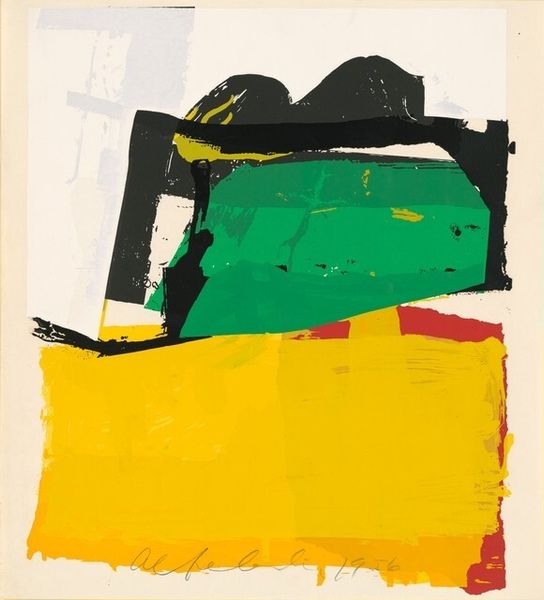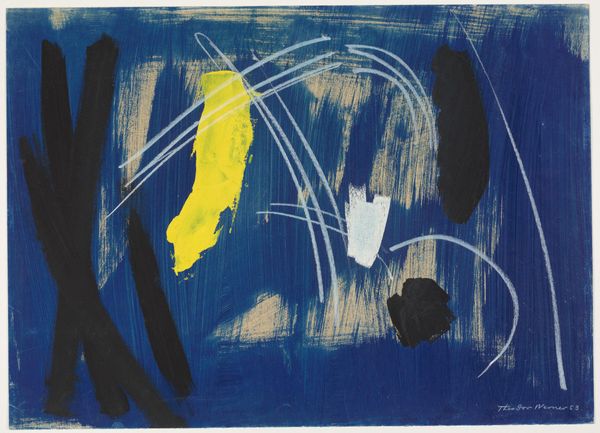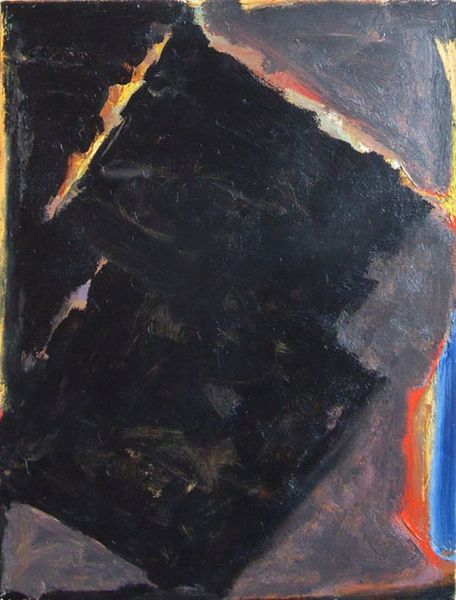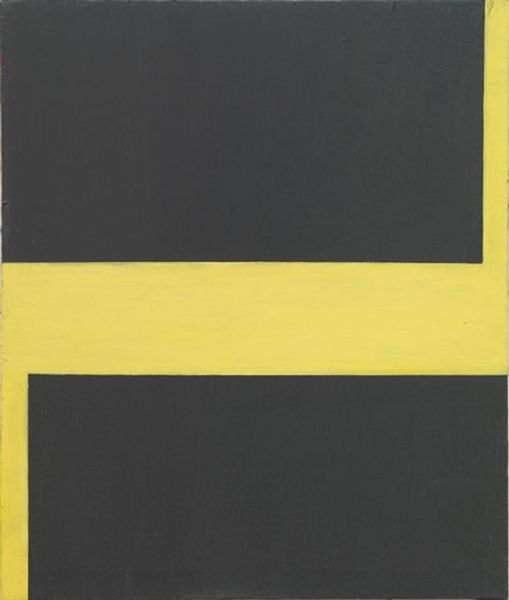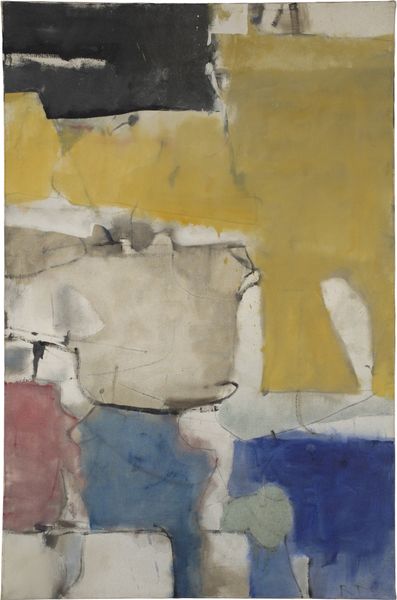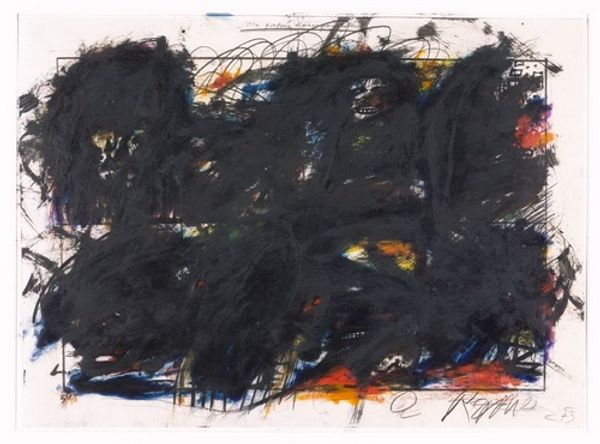
painting, acrylic-paint, black
#
abstract-expressionism
#
abstract expressionism
#
acrylic
#
painting
#
acrylic-paint
#
oil painting
#
black
#
abstraction
#
monochrome
Copyright: Perle Fine,Fair Use
Curator: I find myself immediately drawn to the tension and drama within Perle Fine’s "Black on Yellow" from 1952. What a stark first impression. Editor: Stark indeed. The chromatic intensity of those two main blocks of color evokes a certain unsettledness. It’s a large field painting utilizing black and yellow acrylic paint, a rather unusual choice of medium for the time. Curator: Yes, that medium is noteworthy. Given that Fine worked within the New York Abstract Expressionist circle, dominated mostly by men at the time, exploring non-traditional techniques in material becomes almost an act of resistance, wouldn't you say? The period reflects broader gendered constraints impacting access and acceptance for women artists. Editor: While I understand the appeal of viewing that decision as transgressive, it might equally be an intrinsic artistic decision regarding desired surface, texture, and luminosity that moves past constraints. To me, the flat application, broken only by linear elements that emerge almost hesitantly through both the lower yellow field and black mid-section, creates depth, like architectural plans in elevation view. Curator: Interesting observation! And the patches of cobalt peeking through definitely disrupt an otherwise stable dichotomy. Can this splash of blue indicate some element of change disrupting this otherwise rigid construct? As a period artwork it is inevitable to relate it to the impact on abstract artists from political issues during and after World War II. Editor: Yes, the artist might also see that dynamic of color differently. My reading, instead, is to simply view that subtle tonal choice as essential to creating a more layered, rather than dualistic or symbolic, experience of space within the painting itself. The painting moves the viewers beyond easy conceptual or theoretical binary limits and towards a more plastic, spatial awareness. Curator: So we're essentially differing on whether to emphasize historical-political interpretations versus close formal reading. Perle Fine perhaps might enjoy hearing both interpretations coexist—a richer understanding emerging precisely from these differences in approach. Editor: I couldn’t agree more. Ultimately, "Black on Yellow," whatever the period context behind it, demands prolonged contemplation from an observer for any element within it to even start revealing itself. The impact this artistic gesture has cannot be constrained into mere conceptualizations and political narratives, regardless how true they are.
Comments
No comments
Be the first to comment and join the conversation on the ultimate creative platform.

